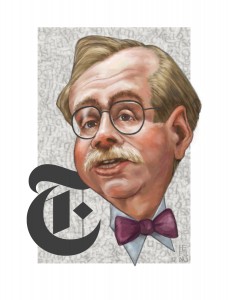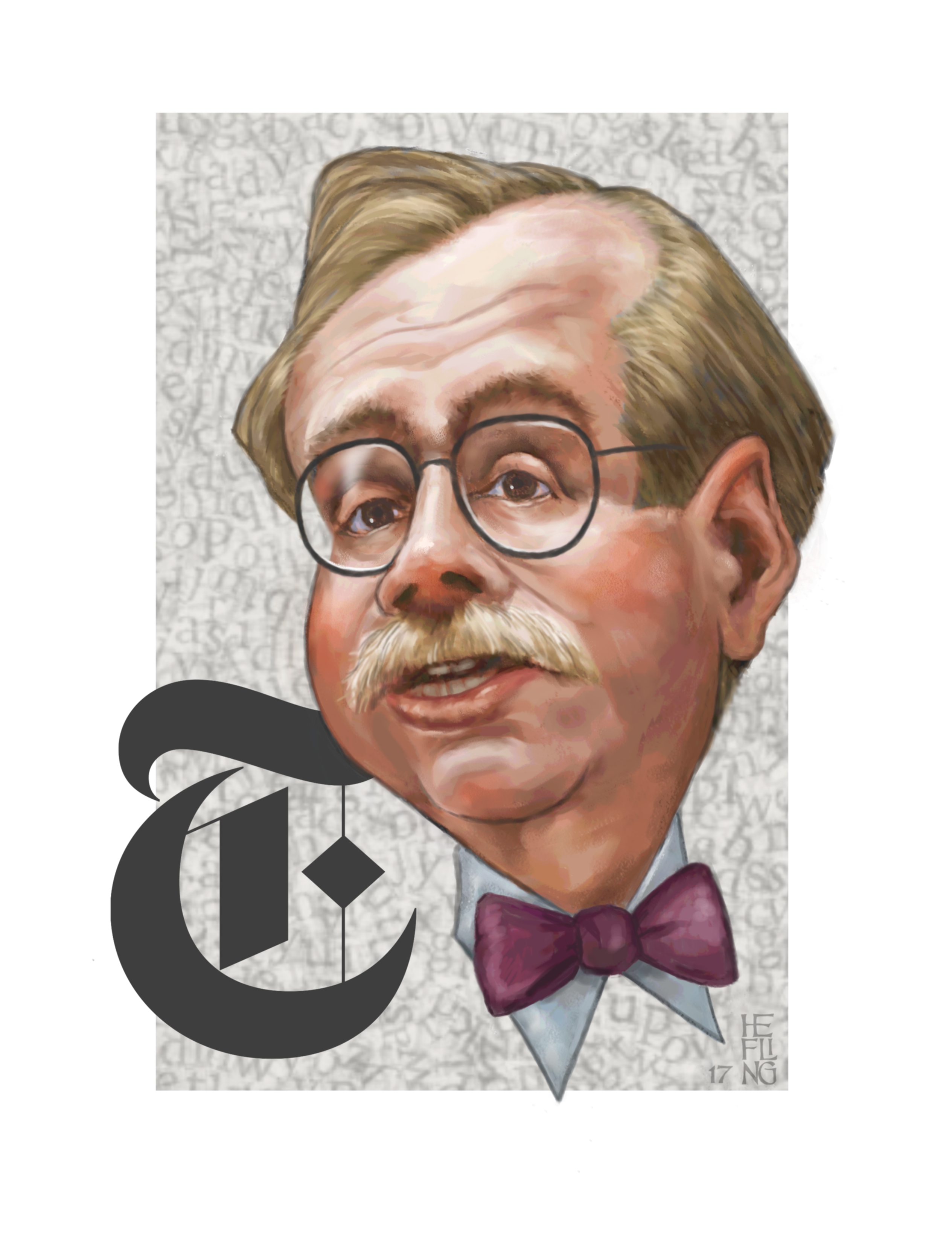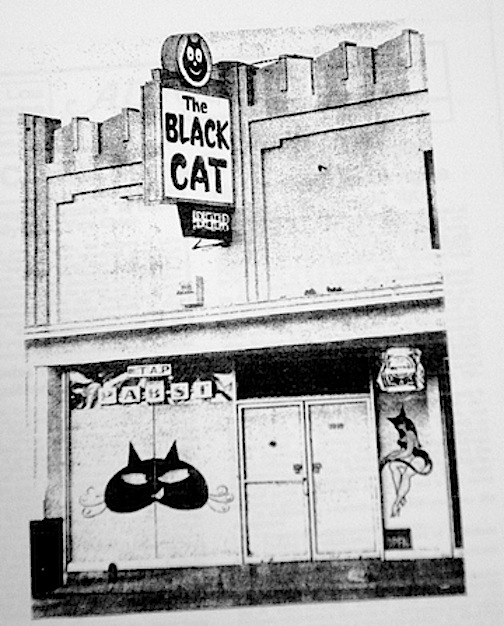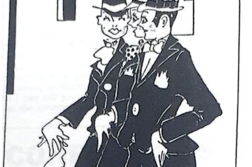WHEN PEOPLE open The New York Times today, they’re met with same-sex wedding announcements, stylish gay trends, and in-depth coverage of GLBT political and cultural issues. This represents a seismic shift that occurred quite recently in the newspaper’s history, and much is owed to the groundbreaking work of journalist Jeffrey Schmalz when he worked there in the 1980s and early ’90s. Schmalz died of AIDS at age 39 in November 1993.
From our vantage point today, it seems strange that The Times, known for its tradition of liberalism on social issues, failed to embrace GLBT issues sooner than it did. The paper didn’t even allow the use of the word “gay” until 1987, preferring the semi-pejorative “homosexual,” belying the editors’ disapproval, if not hostility, toward the people so identified. Before Schmalz began covering AIDS and other gay-related issues, articles on these topics were uniformly pejorative or, at best, ambivalent in tone.
Jeffrey Schmalz grew up in Willow Grove, Pennsylvania, where he knew two things early on: that he was gay, and that he wanted to be a journalist. While a sophomore at Columbia University, he wrote an audacious letter to The Times saying that, while he didn’t come from a rich family, hadn’t attended private school, and wasn’t “the sort of person you’d normally hire,” he was exceedingly talented, and they should hire him—which they did. He started as a copy editor on the night shift, the bottom rung of the newsroom ladder. He dropped out of Columbia to work full-time, deciding that he had found his life’s vocation working for a paper that he revered.

A 2015 book by Samuel G. Freedman, Dying Words: The AIDS Reporting of Jeff Schmalz and How It Transformed The New York Times, documents Schmalz’ profound effect on American print media.* In a personal interview, Freedman, a professor at Columbia University and the “On Religion” columnist for The Times, discussed the atmosphere at the paper before Schmalz’ arrival:
Even in liberal circles, prejudice against lgbtq people was acceptable and anti-gay jokes and stories featuring mincing stereotypes were okay, whereas an anti-black or anti-woman comment would not be tolerated. But specifically at The Times in the 1970s, you had an executive editor named Abe Rosenthal and a publisher, Arthur Sulzberger, Sr., who discriminated against gays, promoting a homophobic atmosphere there. This attitude was typical in most newsrooms, but more damaging at The Times because of its huge footprint as the paper of record.
So Schmalz’ reluctance to out himself in such a hostile environment was not unreasonable.
Everything changed on December 21, 1990, when Schmalz, now deputy editor of the National Desk, collapsed with a seizure in the newsroom due to PML, a progressive brain infection. Soon thereafter he was diagnosed with AIDS. As it happened, everyone in the newsroom knew he was gay anyway. AIDS had kicked in his closet door and that of many other gay men. Observes Freedman about Schmalz’ character in his book: “Jeff was my rabbi and mentor who watched out for me, as well as the first gay person I ever knew, and he played favorites, luckily for me, but I did notice that the closet made Jeff bitter, and once the closet doors were blasted away, not only could he openly report on the disease that was killing him and others, but he could give greater vent to his kindness and compassion more broadly.” Anna Quindlen remarked in an interview that “Jeff became a better writer because he became a better human.” His sister, Wendy Schmalz Wilde, noted that “he was more willing to help other people and realized there was more in the world than climbing to the top of The New York Times. AIDS freed him to be his true self.”
After seven months away from the newsroom, having survived pneumonia and brain surgery, Schmalz proposed an AIDS beat where he would cover the plague, not from a medical, political, or public policy perspective, but as a human interest story. A new and dramatic world had opened up for him. Fortunately, with the more enlightened environment promoted by executive editor Max Frankel and publisher Arthur Sulz-berger, Jr., Schmalz was allowed to contribute long, in-depth profiles of PWAs, including Larry Kramer, basketball star Magic Johnson, Republican advocate Mary Fisher, novelist Harold Brodkey, and author Randy Shilts, author of 1987’s landmark book And the Band Played On. He also filed searing first-person articles—such as one titled “Covering AIDS and Living It: A Reporter’s Testimony”—then a daring rarity at The Times. Schmalz was able to set the standard for AIDS coverage for newsrooms throughout the country, with every major paper following suit. Eventually, he would cover AIDS full-time, writing about forty articles targeted to a mainstream readership.
Schmalz’ personal essays brought him an unexpected—and unsought—celebrity. He was featured on TV shows and in magazine articles, gave speeches, and attended photo shoots. Being in the spotlight in this way, notes Freedman, went against his “longtime ethos of the story being paramount over the reporter, [but]allowed him to promote AIDS awareness and fuller acceptance of lgbtq people.” Stylistically, he pushed the limits of the third-person point of view, promoting a more literary journalism—the sort of creative nonfiction that’s so popular today. This approach gave him some latitude in how he approached his subjects. When he interviewed a PWA, he would inform him of his own HIV status “in the hope the camaraderie would open them up, but also to let them know that someone with full-blown AIDS could carry on as a full-time reporter.” They trusted him with their stories in a way that they would not have trusted a straight male or female reporter.
In his “Covering AIDS” piece, Schmalz offered his reasons for making this revelation: “I have used my affliction to advantage, to obtain interviews and force intimacy. Does that make me feel guilty? You bet. But to have AIDS is to live with guilt and shame.” He also unveiled the personal cost of the disease and the rewards of covering it: “To have AIDS is to be alone, no matter the number of friends and family members around. Then to be with someone who has HIV, be it interviewer or interviewee, is to find kinship.” Freedman characterizes Schmalz’ AIDS reporting as “piercing the hearts of readers and stirring the conscience of The New York Times in vital and enduring ways.” These profiles were compassionate and unflinching. For example, in his profile on Magic Johnson, Schmalz berated his decision to retire from the NBA in the face of opposition from fellow players who feared being infected by him, writing that “if Magic feels betrayed by fellow players, so too do many fellow HIV sufferers feel betrayed by him. They argue that by leaving competition, he has given legitimacy to what they view as irrational fears.”
He had deep remorse about his early lack of coverage of AIDS and gay topics, “chastising himself as a coward, wanting to use whatever time he had left to make up for this lack.” ACT UP (especially Larry Kramer) had previously been critical of Schmalz and The Times for neglecting AIDS, which sent out the message that the epidemic was not an important issue. Schmalz struggled to negotiate the line between being objective in his reporting and playing an activist role. He said in an interview with Forrest Sawyer on the ABC TV news magazine Day One: “I’m a gay man with AIDS and I’m angry with the world and frustrated. I understand the rage of ACT UP, even if I don’t always agree with their tactics.” Covering a funeral march in Greenwich Village for an ACT UP leader, he was asked by a TV correspondent whether he was there as a reporter or as a gay man with AIDS. “They wanted an advocate, not a reporter. So there I stood, a gay man with AIDS out of place at an AIDS funeral, an outsider in my own world.”
Schmalz’ challenge was to reconcile his journalist persona with his status as an AIDS patient who supported more government research and faster drug approvals. He wanted to make certain AIDS would not weaken his reporting. “For two years, I had been a by-the-book reporter, no personal involvement allowed. But now I see the world through the prism of AIDS. I feel an obligation to those with AIDS to write what just about no other reporter in America can cover in quite the same way. This is the place—reporting—where I am at home. This is the place where I must come to terms with AIDS. … [T]o turn activist would mean that AIDS, not reporting, would define me. It would be to surrender totally to the disease.” He was continually walking this tightrope between being objective and wanting to make a contribution to the fight against AIDS. Invited in 1993 to speak at the Dalton School, an elite private high school in Manhattan, he fielded questions from students rather than deliver a speech. When asked why he continued to work, he replied: “Working was so much a part of my life and a part of who I am. I realized I was in a position very few people are in, and I could be an advocate and a voice for people who have AIDS.”
Schmalz felt a responsibility to those who had died, especially his friends: “It’s not that I am writing editorials, avenging their deaths. It’s that I feel their strength. They are my conscience, their shadows [are]with me everywhere: In the torchlight of the march. Over my shoulder. By my desk. In my sleep.” He received hundreds of letters, some from people who knew he had AIDS and others from those who had figured it out by reading between the lines, declaring that “those are the ones that I’m proudest of. ‘Consider this letter a giant hug,’ wrote a man from Philadelphia.”
Inside The Times, according to Freedman, Schmalz became “a change agent by promoting a sense of inclusion and affirming an lgbtq-friendly editorial policy and fairer personnel decisions for gay employees. Because Schmalz was the quintessential Times man, when he got sick, anyone in the newsroom who was on the fence, had an ‘ick’ factor, or was privately homophobic, could no longer stand those attitudes anymore because Schmalz was so admired and beloved. It was as if the whole paper got AIDS. His fight for life and his indomitable will to keeping working daily on public display put AIDS and gay issues front and center.” While avoiding direct confrontations with Times management, he became an outspoken supporter of equal rights for gay people in the newsroom. By detailing his own struggle, he humanized AIDS, bringing it out of the closet, with his slow physical decline yet tenacious work ethic in full view. Also Schmalz’ first-person accounts and positive profiles of openly gay people were landmarks for The Times. There was no turning back as AIDS forced LGBT issues increasingly into the daily news and the national dialog.
Schmalz’ last article, “What Ever Happened to AIDS?”, published three weeks after he died, was finished by two gay reporters that Schmalz had mentored, Adam Moss and Adam Nagourney. The thesis was that the political wars had been won and government funding was appropriated. The matter at hand was waiting for science to find effective treatments, the conflicts of the ’80s had quieted down, and AIDS was rarely a front-page story. Thus the question in the title of the piece had life-and-death consequences for Schmalz and other PWAs. Schmalz was able to vent his own frustration at the maddeningly slow pace of research: “Am I bitter? Increasingly yes. At the ACT UP political funeral in Washington for Tim Bailey, I thought of how much the anger of the activists mirrored my own. I, too, wanted to shout—at no one really, just to vent the rage. I am dying. Why doesn’t someone help us?” Still, in the very last paragraph, he summed up his career at The Times: “I usually say that my epitaph is not a phrase but the body of my work. I am writing it with each article, including this one.”
Schmalz found comfort in a co-op apartment he had bought near Lincoln Center, as well as in the love of Louis Broman, whom he met at an AIDS support group earlier that year. But by September 1993, he was too ill to come into the office, and the reporter who was so deft at verbal communication could barely speak for the last three months of his life, for most of which he was hospitalized and trying experimental AIDS treatments. A segment on him was broadcast on the ABC newsmagazine Day One on October 11th. He died at home on November 6th, surrounded by family and friends.
Rich Meislin, a gay reporter and close friend of Schmalz, was assigned the heartrending task of writing the obituary for The Times. Meislin described Schmalz as a journalist who wrote with passion and insight about AIDS sufferers, bearing witness to both their determination and despair. He quoted Max Frankel, executive editor of The Times, stating that “his coverage of the plague has produced a remarkable bequest to American journalism.” In an e-mail exchange, Meislin described how things have changed inside The Times organization: “Over the intervening two decades, being gay at The Times became less and less of an issue. Most gay reporters today are open, and they are well represented among the paper’s most respected bylines. Gay editors have served on the masthead, at least two as assistant managing editors. The atmosphere of fear that prevailed when I first arrived is long gone.” And because The Times sets the standard for the whole industry, media policies toward GLBT reporters and staff shifted broadly toward greater acceptance.
A GOOD INDICATION of how far The Times has progressed on GLBT issues can be found in its coverage of two tragic events separated by about 35 years. On June 15th of last year, in response to the Orlando Pulse Club massacre three days earlier, a gay reporter for The Times named David Dunlap (who also knew Schmalz) filed a piece on a barely remembered incident of anti-gay carnage that occurred in New York City on November 19, 1980. Known as the West Street Massacre, it involved a homophobic former transit police officer who killed two men and wounded six others with an Uzi outside the Ramrod, a popular leather bar. One of the slain men was Vernon Kroening, a beloved gay music director, choirmaster, and organist at St. Joseph’s Roman Catholic Church in Greenwich Village. Wrote Dunlap: “Prejudice and institutional reticence held The New York Times back from giving faces to these victims and telling their stories at the time, as it did with those who were killed at the Pulse nightclub in Orlando, Florida in June. The Times did not even know Mr. Kroening’s name, as the dead man was not immediately named because he carried no identification. It fell to Kroening’s partner, Robert Janosik, to identify his body at the city morgue after he failed to come home.”
The June 15th article misspelled Mr. Kroening’s name and designated the wrong intersection where he was gunned down. Kroening’s friends wrote to The Times about the errors and added fond recollections (“he was stunning looking like a movie star … with an all-embracing smile”) and memories about his final week before his death. “They are what prompted this overdue profile,” wrote Dunlap in a follow-up article on July 1st (“A Proper Farewell, Finally, for a Victim of an Anti-Gay Rampage in New York”). “So did the fact that the event, for them, is still fresh, not erasing the shock of his murder.” Dunlap also mentioned there is little in the public record about the other victim, Jorg Wenz, a 24-year-old doorman at The Ramrod. He invited friends to send any stories about him, “so The Times can bid Mr. Wenz a proper farewell some day. It is more than about time.” This article is a de facto apology for The Times’ inadequate reporting of the 1980 incident, reflecting the characteristic attitude of that period, one that was first challenged by Jeffrey Schmalz a few years later. Such revisionist introspection would have been inconceivable in the era before Schmalz, who helped the paper to face up to its historical homophobia, precipitating a cultural change that eventually produced this self-critical piece.
Freedman was shocked to realize that Schmalz’ contributions were largely forgotten outside The Times, so he decided to rectify that situation by writing his book. Today one can pick up The Times and see GLBT executive editors or read an openly gay op-ed columnist (Frank Bruni). An editorial in 2013 advocated legalization of same-sex marriage in all fifty states, two years before two landmark Supreme Court decisions made this a reality. Among those reporting on these rulings was Andrew Rosenthal, the son of the homophobic executive editor A. M. Rosenthal. The Times have manifestly changed.
* The website for the book contains an accompanying radio documentary featuring interviews with leading journalists. Also posted is a lecture delivered by Freedman last spring at the UC-Berkeley Graduate School of Journalism.
Brian Bromberger is a freelance writer who works as a staff reporter and arts critic for The Bay Area Reporter.






